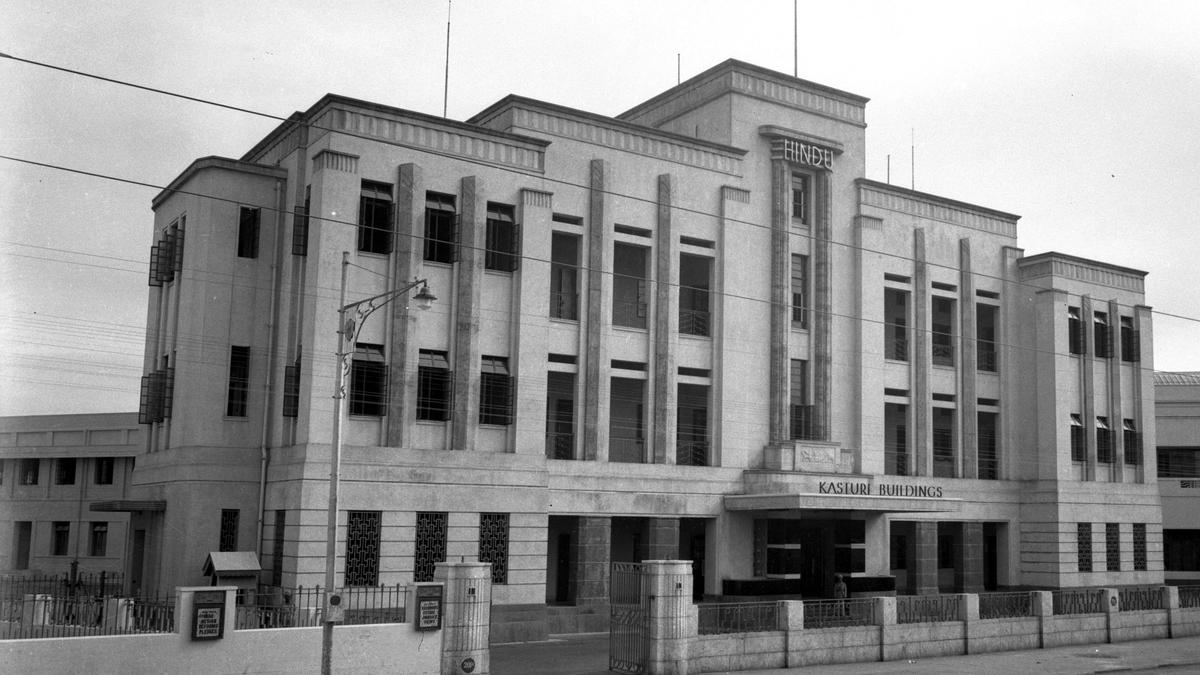
Kasturi Buildings: A tour through the premises
The Hindu
Kasturi Buildings, an iconic landmark in Chennai, was built in 1939. Its architect was H. Fellowes Prynne, A.R.I.B.A. and engineer N.R. Srinivasan oversaw construction. The building is shaped like a T, with a statue of Munro at its foot. It houses a duplex Rotary press machine and a 20,000 sq. ft. paper godown. Its walls are made of stock brick and reinforced cement concrete, while floors and roofs are of reinforced cement concrete. From the rooftop, one can see the Island Grounds, Mount Road, George Town, harbour, Kirk of St. Andrews, Loyola College, Tiruvotiyur, Perambur, Vepery, Nungambakkam, Mambalam, Cooum, St. Thomas Hill, Guindy, Adyar and Santhome.
Named as ‘Kasturi Buildings’ after S. Kasturiranga Iyengar, the late Editor of The Hindu, the office of The Hindu Group located on Anna Salai in Chennai turned out to be one of the iconic landmarks of the capital city.
The grihupravesam ceremony of this building was performed on November 25, 1939, as per Hindu traditions.
According to a report published in The Hindu on December 7, 1939, the building’s architect was H. Fellowes Prynne, A.R.I.B.A., of M/s Jackson and Barker, Chartered Architects, Madras who was responsible for the design of the building and the interior decoration.
Engineer N.R. Srinivasan of M/s The Modern Construction Co, Madras was in-charge of the construction work.
Kasturi Buildings spread out in two blocks in the shape of a T, with the horizontal arm facing the Mount Road and with an opening on the northwest into the Ritchie Street.
The 84-year-old building housed a duplex Rotary press machine that was at the height of two floors.
A shed covering an area of about 20,000 square feet, which was formerly the workshop of the Ford Motor Company, was renovated and transformed into the paper godown.













